Curator’s Favorite: Becker, F. Otto. Pioneer & Modern Scenes. (Terre Haute, Indiana: Published by the J. M. Vickroy Co., 1895), chromolithograph.
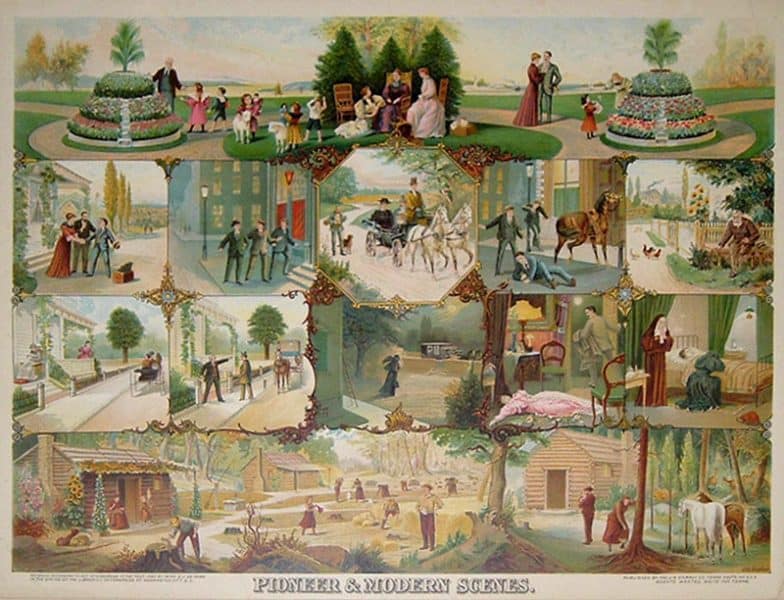
Becker, F. Otto. Pioneer & Modern Scenes. (Terre Haute, Indiana: Published by the J. M. Vickroy Co., 1895), chromolithograph.
Then-and-now prints often fascinate the viewer through the comparison and contrast of times past and present. This print, a recent gift of shareholder David Doret, illustrates the point nicely. The work, a social commentary issued during a depression, the waning of the Victorian era, and the increasing dominance of urban America, displays its mid-west designers’ fears and hopes for modern society.
The chromolithograph, published by J. M Vickroy & Co., a mid-west firm that specialized in genealogical and fraternal order certificates, contains two illustrated morality tales bordered by idyllic scenes of pioneer and modern life. German-born artist F. Otto Becker, best known for the 1895 lithograph “Custer’s Last Stand,” designed this retrospective montage of views. Heavy-handed and oblique visual cues abound in the scenes to forewarn the print holder about the slippery slope that is modern life, especially the spirit of self-indulgence criticized in the previous decades known as the Gilded Age.
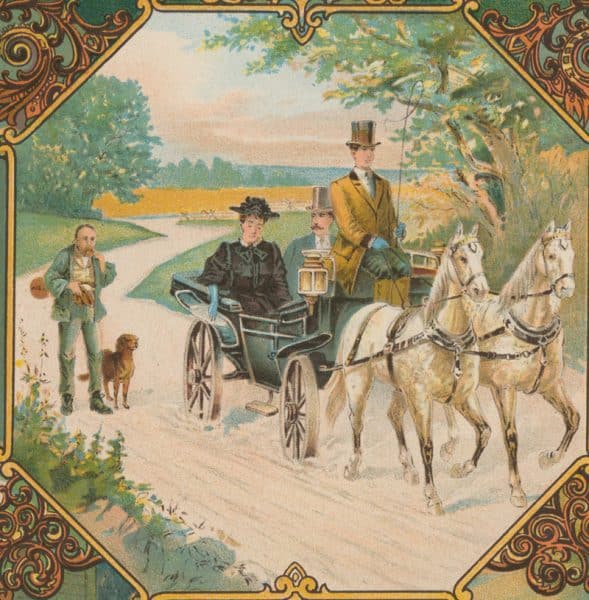
The central vignette showing a chauffeured carriage on a dirt road transporting a wealthy couple past an indigent man, presumably a victim of the Panic of 1893, epitomizes this sentiment.
The central vignette showing a chauffeured carriage on a dirt road transporting a wealthy couple past an indigent man, presumably a victim of the Panic of 1893, epitomizes this sentiment.
The morality tales play upon societal concerns about the urbanization of the country and are clichéd gems of the dire consequences for a “self-indulgent” young man and woman of the late-19th century. The lures of city life and unencumbered passion lead only to tragedy according to the lesson of the print. Scenes of the red light district, inhumanity, passive women, aggressive men, and moral consequences encompass the tales. The tableaux exemplify the double standard applied to men and women in the Victorian era. The conclusions of the tales particularly demonstrate this inequity.
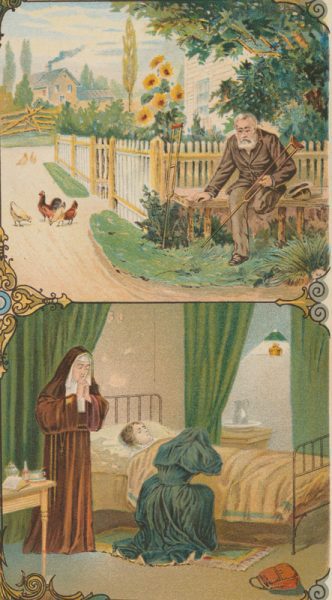
Whereas the man ends his final years as an amputee in the country, with a permanent, physical reminder of his misspent youth, the woman spends her final days under the care of nuns praying for her soul.
Whereas the man ends his final years as an amputee in the country, with a permanent, physical reminder of his misspent youth, the woman spends her final days under the care of nuns praying for her soul.
The border scenes sentimentally compare and contrast, as the title states, pioneer and modern life. The depictions show an evolution in the physical and social environment and in the roles of men, women, and children. A homestead of young settlers and children at work transforms into a park where a multi-generational family recreates.
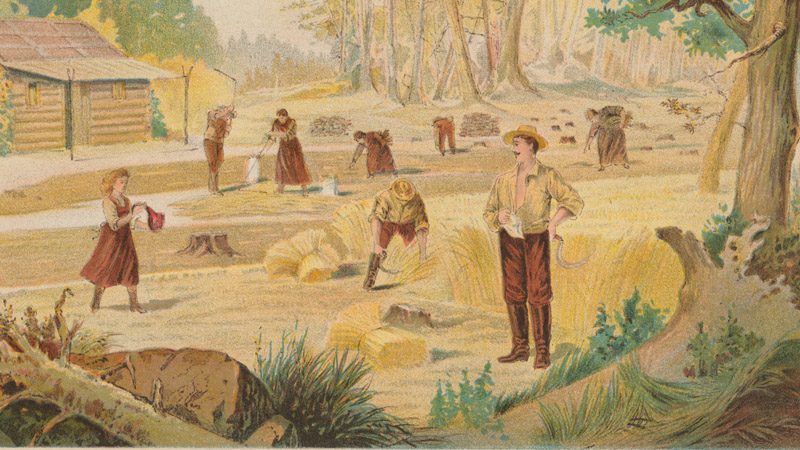
A homestead of young settlers and children at work transforms into a park where a multi-generational family recreates.

A homestead of young settlers and children at work transforms into a park where a multi-generational family recreates.
In the most unexpected role change, the pioneer wife whose husband attends their baby as she adjusts her stocking is transformed into the modern wife fixing her husband’s tie.
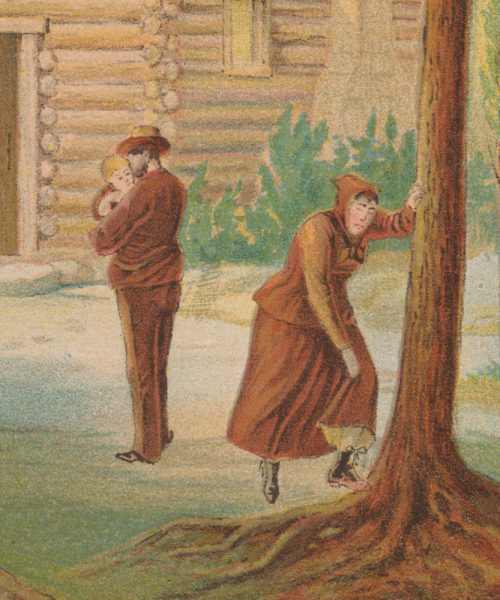
In the most unexpected role change, the pioneer wife whose husband attends their baby as she adjusts her stocking is transformed into the modern wife fixing her husband’s tie.
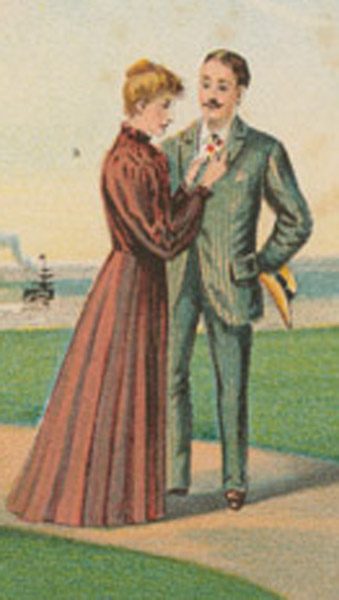
In the most unexpected role change, the pioneer wife whose husband attends their baby as she adjusts her stocking is transformed into the modern wife fixing her husband’s tie.
This multi-faceted print engages the viewer on several levels in its depiction of the competing values of a society in transition. The chromolithograph challenges our expectations of late-19th-century perceptions of pioneer life while at the same time it reiterates the gender stereotypes associated with Victorian society.
Erika Piola
Visual Materials Cataloguer


![[William Chamberlain, photographer] Mrs. M. A. Maxwell’s Rocky Mountain Museum, albumen print stereograph, 1875. In this stereograph, Martha Maxwell poses with her specimens at her Boulder museum.](https://librarycompany.org/wp-content/uploads/MaxwellP200712_lg-1-80x80.jpg)